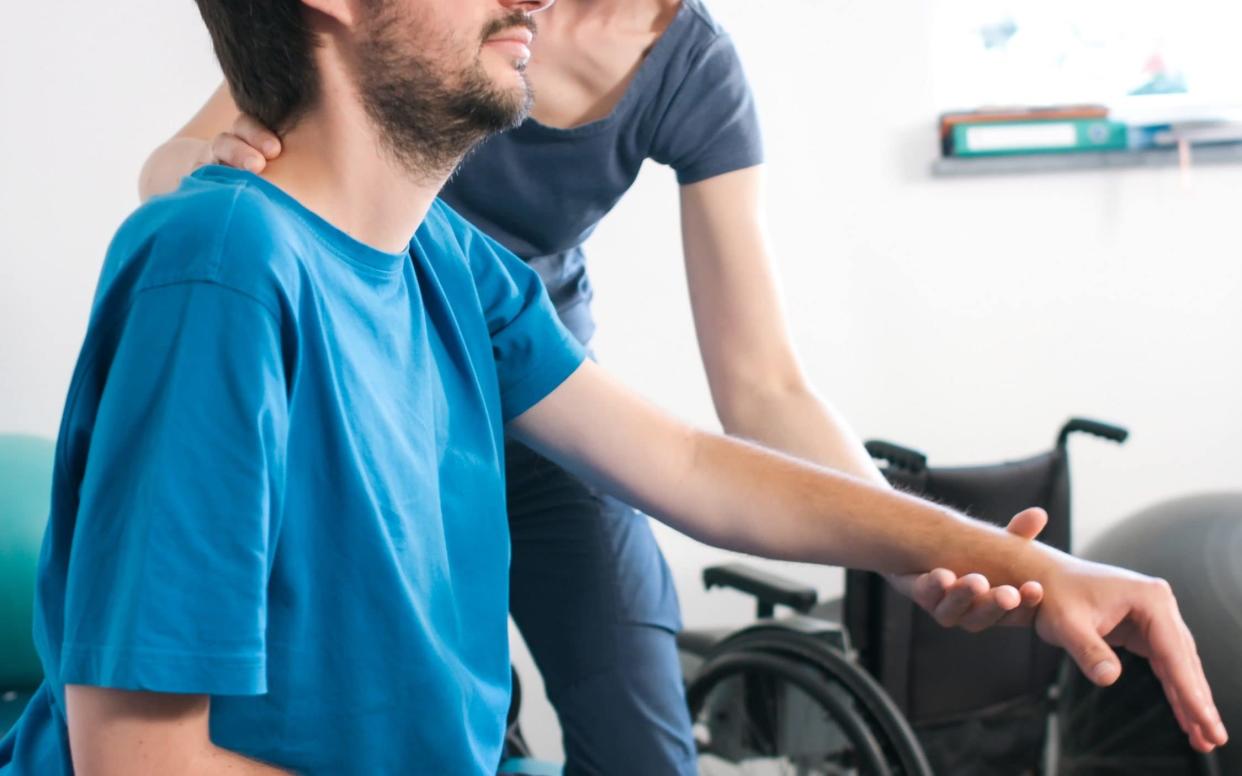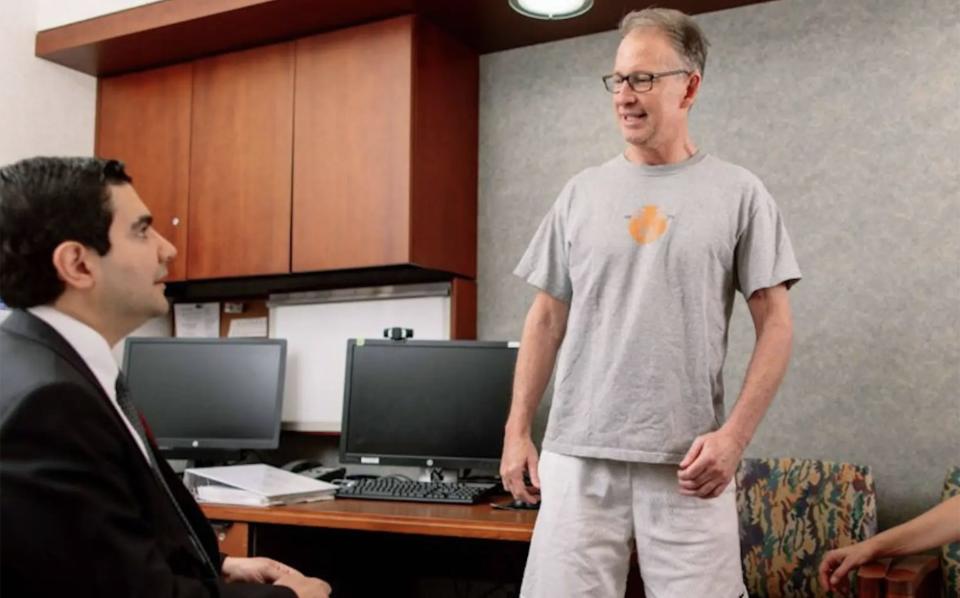Paralysed patients could regain movement and sensation, stem cell treatment trial finds

Paralysed patients can regain movement and a sense of feeling after being injected with stem cells grown from their own fat, scientists have found.
The research into new experimental therapy has shown that patients who had suffered devastating injuries after car accidents and falls showed a number of improvements.
The treatment involves taking fat from the abdomen or thigh and removing the mesenchymal stem cells – a special type of stem cell that can hone in on injuries, and encourage repair and regeneration.
Once the stem cells are isolated from the fat, they are grown in a laboratory over four weeks until they multiply to around 100 million and then are injected into the spine, where they migrate to the damaged area.
In early trials involving 10 patients, seven reported increased sensation in their body and boosted strength in the muscles involved in movement.
Two of three patients who had complete injuries to their thoracic spine – meaning they had no feeling or movement beneath the injury – regained some sensation and some movement control.
Chris Barr, of Lafayette, California, was the first person to receive the treatment after damaging his spine in a surfing accident in 2017.
He told ABC news: “I never dreamed I had a recovery like this. I can feed myself. I can walk around, I can do day-to-day independent activities.
“I’m just thrilled that there are people taking bold steps to try and do research to cure this. It’s been a wild ride, and it’s not over yet.”
Chris, 57, had been surfing in Ocean Beach, San Francisco, when he fell from his board, crashing into the water with enough force to break his neck in eight places.
After being told he was paralysed, he asked his wife Debbie to switch off his life support but in the weeks after the accident, some feeling began to return and he was able to wiggle his toes.
When progress stalled after six months of rehabilitation, he enrolled in the Mayo Clinic trial and began to notice changes within weeks.
“I could feel it, I absolutely felt something in my legs,” he said. “So literally two weeks, I did walk tests, I did hand strength tests, I did finger motor tests.
“Every single one of them improved again by 25 to 50 per cent. Clearly, something happened. The first time I started walking by myself, that was really something.”
Fifteen months after being injected with his stem cells Mr Barr could walk 30ft in 23 seconds and today can do the same distance in just 13 seconds.

Dr Mohamad Bydon, a Mayo Clinic neurosurgeon and first author of the study, said the results indicate that severe spinal cord injuries that were once thought hopeless, could be treatable in the future.
“For years, treatment of spinal cord injury has been limited to supportive care, more specifically stabilisation surgery and physical therapy,” said Dr Bydon.
“Many historical textbooks state that this condition does not improve. In recent years, we have seen findings from the medical and scientific community that challenge prior assumptions.
“This research is a step forward toward the ultimate goal of improving treatments for patients.”
In Britain, an estimated 50,000 people are living with a spinal cord injury with about 2,500 new injuries each year.
Although operations to realign the spine and remove bone fragments or fuse bones can be effective, many people are left without movement below the site of the injury and show little improvement over time.
In the study, six people with neck injuries and four with back injuries, aged between 18 and 65 were assessed using the American Spinal Injury Association (ASIA) Impairment Scale, which has five levels, ranging from complete loss of function to normal function.
After treatment, seven participants who improved each moved up at least one level on the ASIA scale, with two patients moving up two levels. Three patients showed no improvement.
The spinal cord has limited ability to repair its cells or make new ones. Patients typically experience most of their recovery in the first six to 12 months after injuries occur. Improvement generally stops 12 to 24 months after injury.
However, during the trial two patients with cervical spine injuries of the neck received stem cells 22 months after their injuries and improved one level on the ASIA scale after treatment.
Some also regained movement and improved bowel function.
‘Significant improvement to quality of life’
“In spinal cord injury, even a mild improvement can make a significant difference in that patient’s quality of life,” added Dr Bydon.
“Spinal cord injury is a complex condition. Future research may show whether stem cells in combination with other therapies could be part of a new paradigm of treatment to improve outcomes for patients.
“This study documents the safety and potential benefit of stem cells and regenerative medicine.”
Fat tissue was used because it is abundant and easy to get hold of in the body and has the most mesenchymal stem cells.
Despite the success of the treatment, scientists are still unsure how the stem cells are boosting regeneration. In animal trials, it has been shown that they flock towards areas of inflammation, helping to regulate the immune response.
As part of the study, researchers took lumbar punctures from the patients to gather their cerebrospinal fluid before and after treatment to see if they could pick up any changes
After treatment, they found an increased level of a protein called Vascular endothelial growth factor, in seven patients. The protein promotes the growth of new blood vessels and forms part of the mechanism that restores the blood supply to cells and tissues.
The phase one trial, which was primarily looking at the safety of the treatment, reported no serious adverse events with only mild side effects such as headache and musculoskeletal pain that resolved with over-the-counter treatment. Further trials are expected to follow.
The study was published in the journal Nature Communications.

